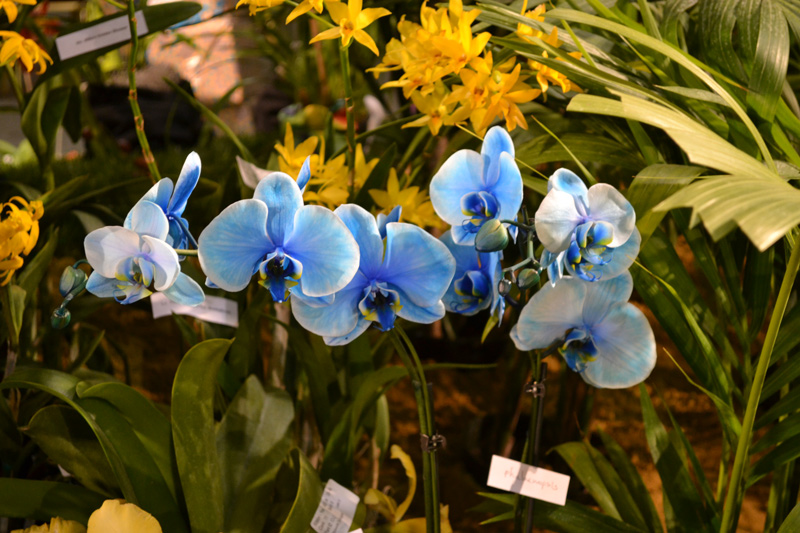The Huntington’s blog takes you behind the scenes for a scholarly view of the collections.
ORCHID COLLECTION | Beyond the Blues
Posted on Wed., April 11, 2012 by
Those who attended the Santa Barbara International Orchid Show in March found plenty to capture their attention, from award-winning plants to big specimens. But if one plant captivated people more than any other, it just might have been the mysterious blue Phalaenopsis orchid on display in the middle of the showground. All weekend, visitors were abuzz, wondering where they could buy their own blue orchid.
Sorry to break the bad news, but no such plant exists in nature. There is really no true blue color for any orchids, although occasionally orchid hobbyists emphasize blueness when describing a range of natural purples.
So what about that blue Phalaenopsis? There are two methods that are most commonly used to dye orchids. Growers will soak a plant in a bucket of concentrated blue dye until the flowers turn blue. This is not the ideal way to dye orchids since they generally do not like to sit in water. Another method is to inject the plant using a syringe, and the dye will eventually be distributed among the cluster of flowers. There are some patented methods of injecting dye within plants in the orchid industry.
The practice of dyeing orchids has a controversial side to it. Some people approve of it because it satisfies their fantasy of a true blue orchid, while hobbyists and purists disapprove. The blue Phalaenopsis has begun showing up on the shelves of home improvement stores and markets typically three times the price of the undyed—or natural—versions. So be careful the next time you spot a blue Phalaenopsis that looks too good to be true.
Brandon Tam is The Huntington's orchid specialist.
